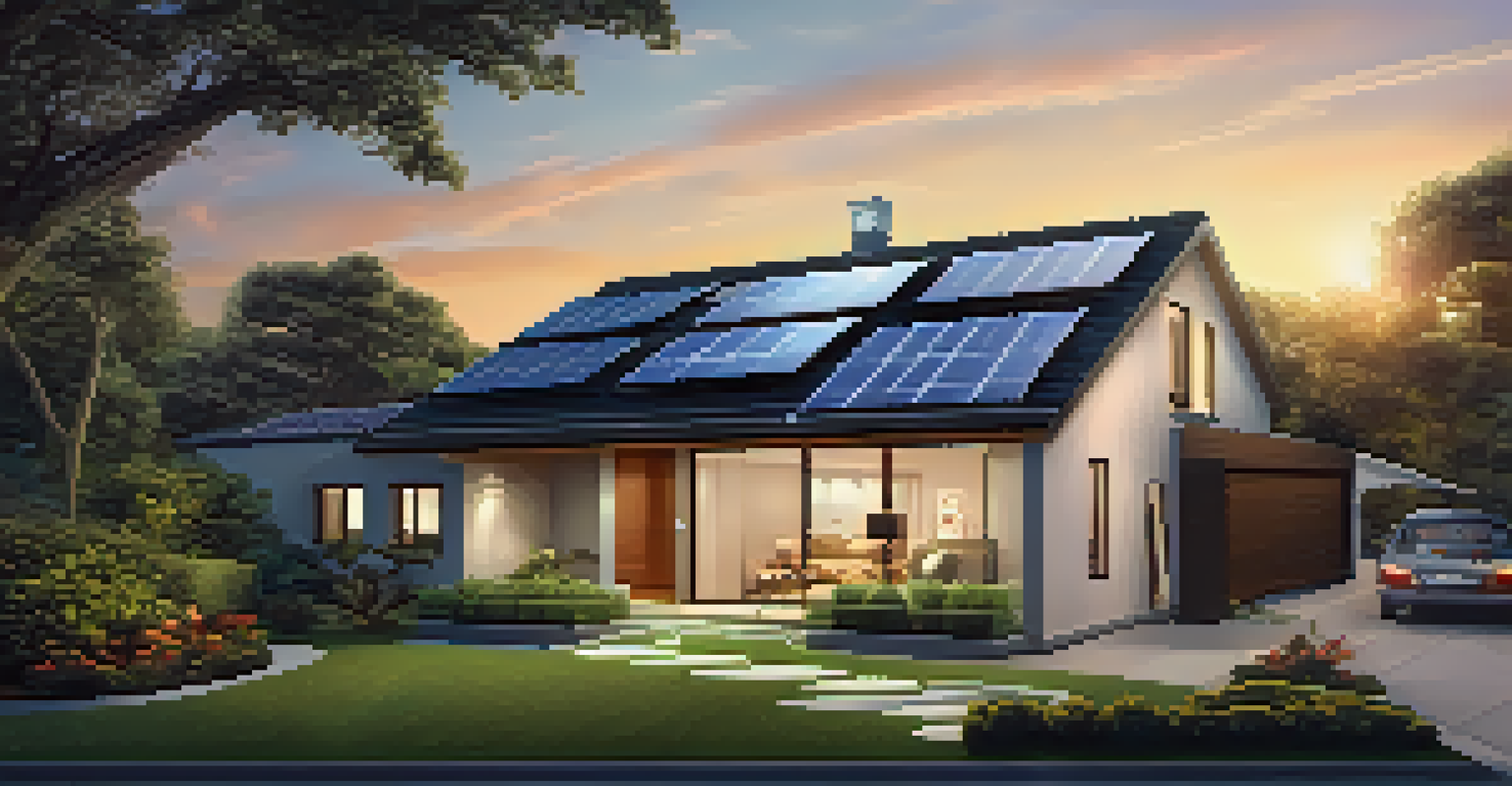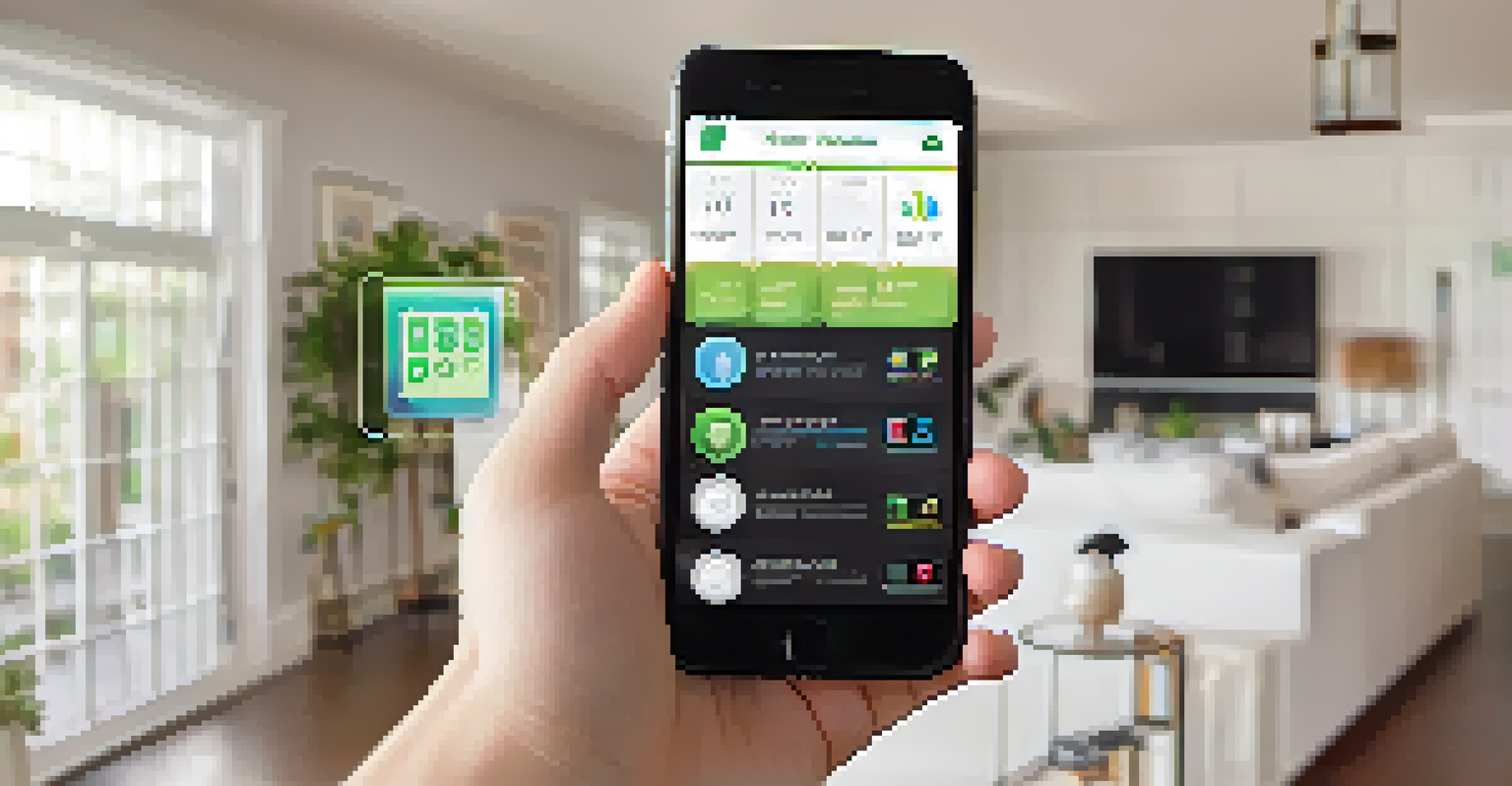Designing for the Future: Timeless Trends in Home Automation

Understanding Home Automation: A Brief Overview
Home automation refers to the use of technology to control household systems, such as lighting, heating, and security, remotely. This technology enhances convenience and efficiency, allowing homeowners to manage their environment with ease. Imagine being able to adjust your thermostat from work or turn off the lights with a simple voice command.
Technology is best when it brings people together.
As we move forward, the integration of smart devices in our homes is becoming increasingly commonplace. This shift is not just about gadgets; it’s about creating a seamless living experience that adapts to our lifestyles. For instance, smart speakers can manage everything from music to home security, making our daily routines smoother.
Ultimately, the goal of home automation is to enhance the quality of life for homeowners. By embracing these technologies, we’re not just keeping up with trends; we’re laying the groundwork for a more efficient and comfortable future.
Sustainability: The Green Revolution in Home Automation
As concerns about climate change grow, sustainability has taken center stage in home automation. Smart home systems can help reduce energy consumption by optimizing heating and cooling based on your daily patterns. For example, a smart thermostat can learn when you're home and adjust temperatures accordingly, saving energy when you're away.

Moreover, integrating renewable energy sources, like solar panels, into home automation systems allows homeowners to monitor and manage their energy use more effectively. Imagine generating your own power while controlling it through an app; it’s not just efficient but empowering as well. These technologies are paving the way for eco-friendly living.
Home Automation Enhances Convenience
Smart home technology allows homeowners to control various systems remotely, improving comfort and efficiency.
Incorporating sustainable practices within home automation is not just a trend; it’s a necessity for the future. Homeowners can take pride in contributing to a greener planet while enjoying the convenience of modern technology.
User-Centric Design: Prioritizing the Homeowner's Experience
Designing home automation systems with the user in mind is crucial for ensuring a satisfying experience. This means creating interfaces that are intuitive and easy to navigate, allowing users of all tech-savviness levels to control their systems effortlessly. For instance, a well-designed app can simplify the management of multiple devices from a single screen.
The future is already here — it's just not very evenly distributed.
Furthermore, personalization is key. Home automation should adapt to the unique preferences and routines of each homeowner. Imagine coming home to a pre-lit house, the perfect temperature, and your favorite music playing—all thanks to smart technology that knows your habits.
By focusing on user-centric design, manufacturers can create systems that not only meet but exceed expectations. This emphasis on the homeowner's experience is what will drive the future of home automation.
Interconnectivity: The Power of Smart Home Ecosystems
The future of home automation lies in the seamless interconnectivity of devices, creating a smart home ecosystem. This means that your devices can communicate with each other, enhancing functionality and ease of use. For example, your smart lights can sync with your security cameras to alert you when someone approaches your home.
A unified smart home system allows for automation of complex routines. Picture this: you can set your home to enter 'away mode' with one command, locking doors, turning off lights, and adjusting the thermostat all at once. This level of integration not only saves time but also increases security and efficiency.
Sustainability Drives Smart Living
Integrating smart systems can optimize energy use and promote eco-friendly practices, contributing to a greener planet.
As the Internet of Things (IoT) continues to grow, the possibilities for interconnectivity will only expand. Homeowners will benefit from smarter, more cohesive systems that work together seamlessly, making their lives easier and more secure.
Voice Control: The Future of Home Automation Interaction
Voice control has revolutionized how we interact with our homes, allowing for hands-free management of devices. With just a few simple commands, you can control everything from lights to appliances, making daily tasks significantly easier. Imagine walking into your home and simply saying, 'Turn on the lights'—it's as easy as that.
The integration of AI-driven voice assistants makes this technology even more powerful. These assistants learn from your preferences and routines, offering personalized suggestions that enhance your home experience. For instance, they can remind you to water plants or suggest recipes based on what's in your fridge.
As voice control technology continues to develop, it will become an even more integral part of home automation. This trend not only adds convenience but also creates a more natural and engaging interaction with our living spaces.
Security: Enhancing Home Safety Through Automation
One of the most compelling benefits of home automation is the enhancement of security features. Smart security systems allow homeowners to monitor their properties in real-time, receiving alerts about unusual activities. Imagine being able to check your security cameras from your phone while on vacation—it's peace of mind at your fingertips.
Additionally, automated lighting and smart locks can help deter intruders by creating the illusion of an occupied home. For instance, you can program your lights to turn on and off at specific times, mimicking your presence. These proactive measures significantly increase your home’s security.
Interconnectivity Boosts Home Security
The seamless communication between smart devices enhances security, allowing for real-time monitoring and automated safety features.
As technology advances, the capabilities of smart security systems will only improve. Homeowners can expect even more sophisticated features, ensuring their homes are not just automated but also secure.
Future-Proofing Your Home: Adapting to Evolving Technologies
As technology evolves, so does the need to future-proof our homes. This involves selecting flexible and adaptable systems that can grow with advancements in home automation. For instance, choosing devices that are compatible with multiple platforms ensures that you won't be left behind as new technologies emerge.
Investing in scalable solutions allows homeowners to easily add new features or devices in the future. Picture starting with a smart thermostat and gradually expanding to a complete home automation system; this gradual integration prevents overwhelming complexity and keeps costs manageable.

Future-proofing is about more than just technology; it’s about ensuring your home remains a comfortable, efficient, and secure space for years to come. By being proactive, homeowners can adapt to the ever-changing landscape of home automation effortlessly.